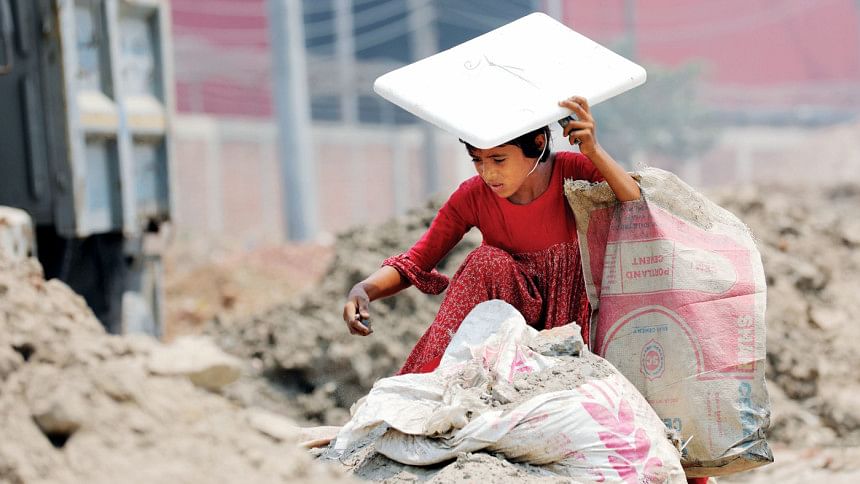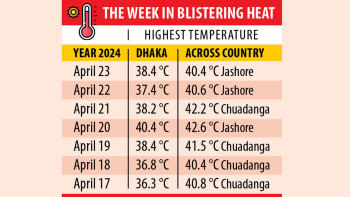Heatwave: After fiery April, milder May beckons

After a scorching April, May could bring some relief. There might be rain and the heatwave spells usually seen during this month would be much shorter, albeit slightly humid, said Bangladesh Meteorological Department officials and experts.
They said the country could start getting some rain as soon as May 2, which would be a godsend after the longest heatwave spell in recorded history of 76 years.
"There will be rain and thundershowers from May 2 to May 8. After that, temperature may rise and there might be two to three mild heatwaves and one to two severe heatwaves in May," Abdul Kalam Mollik, meteorologist at BMD, told The Daily Star yesterday.
Even though May is considered one of the hottest months, officials said this May might be less hot than usual due to the neutralisation of El Nino, a periodic weather event that occurs when the ocean surface in the eastern equatorial Pacific warms above average.
Conditions in the central equatorial Pacific have now returned to neutral conditions, about seven months after El Nino got underway, Australia's Bureau of Meteorology (BOM) said on April 16.
"International climate models suggest ENSO [El Niño–Southern Oscillation] is likely to continue to remain neutral until at least July 2024."
It said the cooler phase, known as La Niña, is expected to return between September and November.
El Niño began in June 2023 and has been causing insufficient rainfall and prolonged heatwaves across Bangladesh.
El Niño, Spanish for "little boy," is a climatic pattern marked by elevated sea surface temperatures in the central and eastern Pacific Ocean. This phenomenon typically occurs every 2-7 years and can last for 9-12 months, influencing global weather patterns.
La Niña, meaning "little girl", is characterised by the cooling of sea surface temperatures in the same regions. It occurs every 3-5 years and can occasionally happen in consecutive years, leading to increased rainfall and distinct weather patterns.
Mostofa Kamal, a weather and climate researcher at the University of Saskatchewan in Canada, said the current heatwave is likely to start to diminish in the eastern parts of Bangladesh after May 3.
"Between May 3 and May 13, severe thunderstorms, intense lightning, and hailstorms will sweep across Bangladesh, with moderate to heavy rainfall almost every night over the Sylhet division, more specifically over Sunamganj and Sylhet districts."
The American Global Forecast System models indicate the potential for an intense cyclone over the southern Bay of Bengal adjacent to the Andaman and Nicobar islands between May 14 and May 17.
It predicted its landfall on May 20-24 somewhere between the Rakhine state in Myanmar and the Indian state of Orissa.
"After the cyclone, another heatwave is likely to sweep over India and Bangladesh, followed by the arrival of the monsoon in the first week of June," Kamal said.
BMD's Mollik, however, said they usually do not forecast cyclones more than 10 days ahead. "To date, there is no such indication in the Bay of Bengal."
India Meteorological Department forecast above-average rainfall during the latter half of the June-September monsoon season. It said El Niño was expected to transition to neutral and La Niña conditions were likely to set in by August-September.
Abdul Mannan, a retired meteorologist, said since there was a prolonged heatwave in April, there will be less intense heatwaves in May than usual.
"Weather is getting unpredictable day by day and so is the climate," he said, blaming climate change.

 For all latest news, follow The Daily Star's Google News channel.
For all latest news, follow The Daily Star's Google News channel. 











Comments